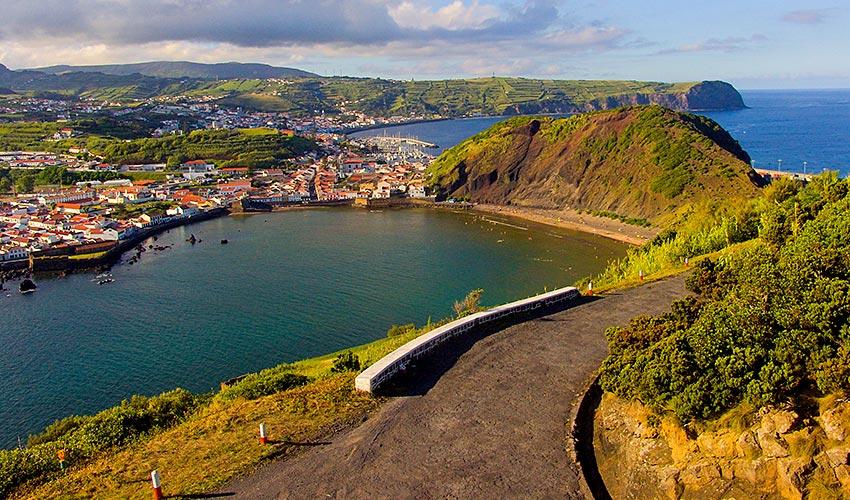The capital of the Azorean island of Faial, the Port of Horta served as an important anchorage for galleons and caravels in the 16th, 17th and 18th centuries and today provides a fashionable marina for yachts. The island, which was colonised in the 16th century by Flemish farmers, stands out for it green and fertile countryside and in June and July for an abundance of Hortenses which carpet the island in a sea of pink, cream and mauve flowers which gained their name from the town.
In fact the 18th century explorer and seafarer, Captain James Cook, remarked on the island’s rich and colourful flora when his ship the Endeavour weighed anchor there in 1775.
These days you are far more likely to see an abundance of transatlantic yachts in the cosmopolitan harbour on their way from the Caribbean islands to the Mediterranean.
Places to See
Horta Museum
Has an interesting display of old furniture, portraits, nautical and sailing memorabilia, model ships and depictions of daily life on the island made out of fig tree wood including handicraft art by the island’s most famous artist Euclides Silveira da Rosa (1910-1979)
Scrimshaw Museum and Peter’s Café Sport
This is a popular café amongst sailors, locals and tourists alike which also features a small museum with exhibits and artefacts that attest to the island’s whaling tradition in the 19th and early 20th century, including ornately carved whale bone ornaments with depictions of whaling and shipping scenes. Whaling reached a peak in the Azores in the late 19th century but was finally banned in 1984.
Jesuits College
Most of the historic buildings in and around Horta have a religious significance and the 17th century Jesuits College is no exception. It was commissioned by the Captain of the Island, Francisco de Utra de Quadros from a generous bequest in his will. The building was a stop-start project for the best part of a century having been begun in 1652 and only partly completed by 1760 when the Jesuits were expelled that same year. Other convents and religious orders on the island include São João Convent, Nossa Senhora da Gloria Convent and the churches of Nossa Senhora do Carmo and Nossa Senhora das Angústias.
São Salvador Church
One of the oldest and simplest churches on the island dating from the first quarter of the 16th century, it was raided and burned by English pirate treasure seekers at the end of the reign of Elizabeth and was later rebuilt in 1607.
Whale Spotting
One of the most gratifying and exhilarating experiences you can ever have in the Azores is to go out whale spotting in the summer months when islands like Faial and Pico attract an abundance of these large marine mammals including huge cachalots, pilot whales, numerous species of dolphin and giant marine turtles. Excursions are organized by the Talassa Company from their offices adjoining Peter’s Café.
Caldeira do Cabeço Gordo
Weather permitting it is worth making an excursion up the island to two volcanic mountain belvederes at Monte da Guia and the Miradouro da Espalamaca offering spectacular views over the island. The latter is dominated by an enormous image of Our Lady of the Conception. On days when the mountains aren’t shrouded by cloud it is worth visiting the impressive 2km wide, 400 metre deep Caldeira do Cabeço Gordo Crater which offers stunning views over the island.
Capelinhos Volcano
This active volcano on the western extremity of the island last erupted in the 1950s destroying a lighthouse which can still be seen embedded in the lava flow. The surrounding landscape still has a lunar quality about it and now and then is used in filmmaking.

 English
English  Português
Português  Deutsch
Deutsch 



